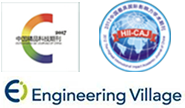Abstract:
NiO is a wide bandgap p-type semiconductor with a unique electronic structure, which is widely used in photoelectrocatalysis, sensors, and ultraviolet detectors, but its photocatalytic activity is limited due to the poor adsorption performance as well as the difficulty of electron-hole pair migration and separation. In this paper, a Cu@NiO catalyst was successfully prepared for the photocatalytic degradation of methyl orange (MO) by using nickel foam after high-temperature annealing in air as raw material, and Cu was encapsulated on its surface by electrochemical pre-lithiation method. The morphology, photoelectric properties and degradation mechanism of the Cu@NiO composites were investigated by various characterization techniques and performance tests. The results showed that the Cu@NiO composites presented a nanowire structure, and their abundant pore structure facilitated the subsequent diffusion and migration of photogenerated electrons. Under simulated visible light irradiation, the catalyst could significantly degrade MO, with a degradation rate of 93.1% in 180 min. The free radical elimination experiments showed that the photocatalytic degradation of MO by Cu@NiO was the result of the joint action of multiple free radicals, in which holes played a dominant role. Therefore, Cu@NiO is a promising catalyst for dye degradation in industrial wastewater treatment.


 下载:
下载: